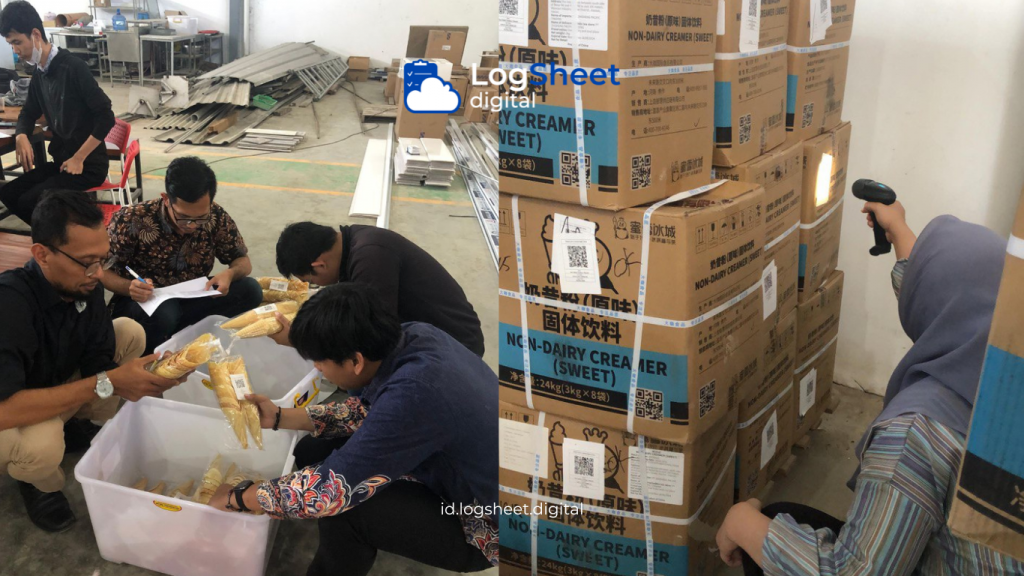In the digital era, many industries are transitioning to technological solutions to enhance efficiency and accuracy in various processes, including safety inspections. One increasingly popular tool is the digital logsheets. This article will explain how implementing digital logsheets in safety inspections can improve performance, compliance, and overall safety.
What is a Digital Logsheets?

Read More: Enhancing Industrial Operational Efficiency with Digital Logsheets
A digital logsheets is a software application that replaces traditional logbooks with an electronic format. This tool allows users to record, store, and manage data digitally, often with additional features such as real-time tracking, data integration, and automatic reporting.
Benefits of Digital Logsheets in Safety Inspections

Read More: Smart Solutions: Digital Logsheets for Operational Health
- Improved Data Accuracy Digital logsheets reduce the risk of human error often associated with manual records. Data entered electronically minimizes the chances of mistakes in recording and calculations, thereby enhancing the accuracy of information used in safety inspections.
- Accelerated Inspection Process With digital logsheets, the inspection process becomes faster and more efficient. Data can be accessed and updated in real-time, allowing inspectors to conduct inspections more quickly and avoid delays caused by manual recording.
- Ease of Data Access and Management Data recorded in digital logsheets can be accessed from various devices, such as computers, tablets, or smartphones. This facilitates the inspection team’s ability to manage and access information from different locations, supporting remote work and better collaboration.
- Better Reporting and Analysis Digital logsheets often come equipped with automatic reporting and data analysis features. This enables safety teams to generate reports automatically, analyze trends, and identify areas needing attention more swiftly than manual records.
- Enhanced Compliance With digital logsheets, tracking compliance with safety regulations becomes easier. The system can be set up to monitor and remind about inspection deadlines and ensure that all required documentation is available and easily accessible.
Steps to Implement Digital Logsheets in Safety Inspections

Read More: Digital Logsheets: Developing Logistics Services and Enhancing Competitive Advantage
- Evaluate Needs and Choose the Right Platform The first step is to assess your organization’s specific needs and choose the digital logsheets platform that best fits. Consider features such as integration capabilities, ease of use, and technical support.
- Training and Socialization After selecting the platform, it is crucial to train the inspection team and socialize the use of digital logsheets. Ensure all team members understand how to use the system and how it can enhance the safety inspection process.
- Data Migration and System Setup Migrate data from the old system to the digital logsheets and configure the system according to organizational needs. This may involve setting up forms, configuring workflows, and integrating with other systems used in the inspection process.
- Testing and Adjustment Conduct system tests to ensure everything functions correctly. Identify and address any issues that may arise, and make necessary adjustments to ensure the digital logsheets work effectively in the safety inspection process.
- Monitor and Evaluate Performance After implementation, continue to monitor the performance of the digital logsheets system and evaluate the results. Gather feedback from users to make necessary improvements and ensure the system continues to meet safety inspection needs.
Challenges in Implementing Digital Logsheets

Read More: Sustainability in Safety: How Digital Logsheets Affect the Industry
- Technology and Infrastructure Constraints Implementing digital logsheets requires adequate technological infrastructure. Organizations may face challenges such as unstable internet connectivity or incompatible hardware.
- Resistance to ChangeSome team members may feel uncomfortable with the transition from manual to digital systems. Consequently, addressing this resistance requires implementing effective training approaches. By providing comprehensive training and consistent support, you can ease the transition and build confidence in using the new system. Moreover, ongoing assistance and clear communication will further help in overcoming any lingering hesitations and ensuring a smoother adaptation process.
- Data Security Managing and protecting digital data requires special attention. Therefore, it is crucial to ensure that digital logsheets are equipped with adequate security features. By doing so, you can effectively safeguard sensitive information from unauthorized access. Additionally, implementing these security measures helps prevent potential data breaches and reinforces overall data protection.
Conclusion

Read More: Digital Logsheets as a Tool for Compliance Reporting and Safety Improvement
Implementing digital logsheets in safety inspections offers various benefits, including improved data accuracy, process efficiency, ease of access, and better reporting. Although there are challenges to overcome, such as technological constraints and resistance to change, the advantages gained from this system can be significant in enhancing safety and compliance in the workplace.
With the right steps in evaluation, training, data migration, and monitoring, organizations can leverage digital logsheets to support more effective and efficient safety inspections. Consequently, this approach brings sustainable benefits to their safety and operational processes.
This article provides insights into how digital logsheets can be applied in safety inspections and their benefits to organizations. If you have further questions or need assistance with implementation, feel free to contact a trusted technology solution provider.






comments (0)